History of the AACR
The following narrative describes over 100 years of AACR history. From the simple beginning of a few scientists gathering to share information to the multifaceted organization that exists today, the growth of the AACR reflects the increasing complexity of our our understanding of the collection of devastating diseases we now know as cancer.
Our history is divided into eras, and the accompanying timeline gives the details of first events and links to supporting information, including lists of officers, directors, award winners, and others. No history could possibly cite all of the many people worldwide who have contributed to the success of the AACR in its vital mission. This history is dedicated to the tireless men and women who work to conquer cancer.
115th Anniversary
In 2022, the AACR commemorated the 115th anniversary of its founding, celebrated the unparalleled progress made against cancer throughout its history, and honored its members as the driving force to eradicate cancer. At the AACR Annual Meeting 2022, a special display and publication titled “Landmarks in Cancer Research” commemorated the seminal discoveries and events that took place over the past 115 years. In addition, the following video was presented during the Opening Ceremony of the AACR Annual Meeting 2022:
1907-1915: The Founding Years
[Timeline of events, 1907-1915]
The American Association for Cancer Research was founded in 1907 at a propitious time. European scientific advances in the late 19th century had set the stage for progress against cancer, a disease that had long been considered hopeless. These advances included the discovery of x-rays and radium; the notion that because chemotherapy could treat tuberculosis and syphilis, it might be effective in other diseases; the development of cellular pathology techniques such as freezing, sectioning, and staining; and tumor transplantation in animals. In the United States, experimental materials were becoming increasingly available, the first government-supported facility for cancer research had been opened in Buffalo, and endowment funds were being set up exclusively for furthering cancer research.
All of the AACR founders were men (four surgeons, five pathologists, and two biochemists; below), although women were presenters at scientific meetings early in the organization’s history, a rarity for the times. At the turn of the century many scientists believed that the cure for cancer was imminent. The newspapers were filled with claims of causes and cures that were quickly disproven, another reason the founders wanted to focus on disseminating the best research.
The 34 AACR charter members were primarily MDs, with only two PhDs, and the dominant specialty was pathology, a reflection of how researchers were classified. The charter group included famous physicians and surgeons such as William Councilman, William Halstead, Roswell Park, J. Collins Warren, and William Welch. Martha Tracy, the first woman member, joined in 1908.
Reverence for European science was so strong among the AACR founders that their first name for the new organization did not include the word American. The intent was to become part of the German Central Committee for Cancer Investigation. World War I curtailed such an affiliation, and American science developed so rapidly thereafter that international interests were not addressed formally until 1958, when scientists outside the Americas were first allowed to join the AACR as Corresponding Members.
Focusing on Knowledge Dissemination: 1916-1939
[Timeline of events, 1916-1939]
The AACR charter cited a single purpose: “to further the investigation and spread the knowledge of cancer.” For its first decade, the AACR carried out this mission solely through an annual meeting. In 1916, the AACR’s first publication,
The Journal of Cancer Research, was launched; it was the first cancer journal to be published in English. In 1931, it was replaced by The American Journal of Cancer. Many seminal papers in early cancer research were published in these two journals.
Member dues were very low, and there was no registration fee for the Annual Meeting. AACR council members and officers were appointed, not elected, and there was no administration other than what the AACR’s secretary and treasurer provided. In spite of the lack of a formal management structure, the Annual Meeting, the journal, and the membership grew over time. Activities in the AACR’s first four decades remained focused solely on one meeting and one journal, however. Initiatives involving education and advocacy for research funding were proposed, but the AACR council voted against expanding the mission, citing limited resources and lack of interest among the members.
Rapid Growth of Research and the AACR: 1940-1963
[Timeline of events, 1940-1963]
By 1940, the AACR was large enough to incorporate. New bylaws called for electing board members at the business meeting of members held during the Annual Meeting (a practice that was continued until mailed ballots were introduced in 1976).
The journal Cancer Research replaced The American Journal of Cancer in 1941. No annual meetings were held in 1943-1945, and the number of papers submitted to the journal decreased owing to the war effort; however, research conducted to support the war had the effect of jump-starting biomedical advances in the post-war period. The 1950s saw the rise of experimental animal models, cancer chemotherapy, clinical trials, and the rapid growth of pharmaceutical companies. Cancer Research flourished editorially, reflecting these scientific advances.
To conserve resources, AACR Annual Meetings were held in conjunction with meetings of other societies, primarily those of the Federation of American Societies for Experimental Biology (FASEB). Grants from funding organizations, including the National Cancer Institute and the American Cancer Society, supported the publication of Cancer Research.
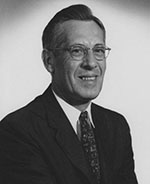
In 1952, Hugh J. Creech (right) became the first AACR Secretary-Treasurer (Dr. Creech served until 1977). An expanded mission statement issued in 1955 noted that the purpose of the AACR was “to bring together active investigators of the cancer problem for presentation and discussion of new or significant observations; and to foster research in cancer and other phenomena of growth.”
Although women scientists joined the AACR in increasing numbers, the first woman was not elected to the board until 1957 (Elizabeth Miller). In 1961, Thelma Dunn was the first woman to be elected president. The first formal policy paper, on the use of animals in research, was published in 1961. The board debated for several years whether the AACR should begin to recognize individual scientific achievements through awards, and in 1961 the board approved the G.H.A. Clowes Memorial Award. Dr. Clowes was an AACR founder who studied cancer for many years, although he is best known for developing insulin.
Emerging Leadership in the Cancer Community: 1964-1981
[Timeline of events, 1964-1981]
During the activist 1960s, it is not surprising that the AACR became more involved in political matters, although the board was frequently divided on the appropriateness of such activism. Specialization within biomedicine was growing, as was the number of subspecialty societies. In 1964, a small group of clinical oncologists founded the American Society of Clinical Oncology (ASCO). In 1965, the AACR hosted the first ASCO meeting, in conjunction with the AACR Annual Meeting. (AACR and ASCO continued to hold back-to-back annual meetings until 1994.) The AACR gave its first public service award (1967) and issued a position paper on smoking (1968).
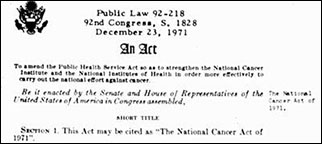
The National Cancer Act of 1971 was a coalescing event that highlighted the AACR’s increased involvement in public policy, with several AACR leaders taking active roles in the debate surrounding the National Cancer Program. This involvement led to the formation of the first public issues (science policy) committee in 1977.
With the expansion of AACR activities, the Cancer Research staff, led by Managing Editor Margaret Foti, working closely with Editor-in-Chief Michael B. Shimkin, took on more responsibility for AACR administration. By the beginning of the 1980s the board of directors had decided that an organization with over 3,000 members, 2,000 abstracts, 3,000 meeting attendees, and a growing list of activities would require full-time administration.
A New Era of Expansion: 1982-1999
[Timeline of events, 1982-1999]
In the year marking the AACR’s 75th anniversary, Margaret Foti was appointed chief executive, a post she continues to hold. (She also served as AACR publisher until 2001.) Initially, she had only two full-time staff members and some part-time staff or volunteers to help with AACR administration. The association’s budget in 1982 was about $330,000; a quarter of the budget was devoted to the journal Cancer Research.
The first order of business was business: putting the AACR and Cancer Research on a sound financial basis. This task involved introducing journal submission charges, page charges, and advertising; advance registration, an advance program, the first exhibits, CME, and subcommittees for the Annual Meeting; and the first formal initiatives to solicit financial contributions from corporations and individuals. These changes required major philosophical shifts and extensive board debate, but were essential to bolster AACR finances because outside grant support for the journal had disappeared and organizational growth required additional resources. The many new revenue streams and efficiencies Margaret Foti introduced in the first five years of her tenure laid the foundation for AACR’s subsequent exponential growth under her leadership.
The year 1988 was a watershed year. The AACR retained a Washington firm to represent cancer research’s interests on Capitol Hill. New minority scholar awards and increased support for Women in Cancer Research (later AACR/WICR) served special constituencies. Scientifically focused AACR special conferences were launched, and these brought the AACR opportunities to identify scientific priorities in the cancer field. The new Associate Member category allowed early-career scientists to become members.
Traditionally, AACR governance had not viewed increasing the membership as a priority; new membership categories had been proposed frequently, and voted down. This view gradually changed, however, and new membership categories approved after 1985 led to rapid growth: from about 5,000 members in 1989 to 10,000 by 1995, and eventually to over 35,000 members in 2015. A larger and more diverse membership also required more programs.
Between 1990 and 1995, the AACR launched several new journals: Cell Growth & Differentiation (1990, to become Molecular Cancer Research in 2002); Cancer Epidemiology, Biomarkers & Prevention (1991); and Clinical Cancer Research (1995). These journals reflected the importance of molecular biology in cancer, a multidisciplinary approach to prevention, and the growth of translational research, respectively. The new journals were a shift from the expectation that Cancer Research could serve all audiences effectively.
In late 1997, the first in-house development staff began to manage fundraising, which previously had been carried out primarily by committees and individual members. An AACR Foundation for the Prevention and Cure of Cancer was approved. This new emphasis on fund development would transform the AACR’s finances in the next century.
New products and programs in the 1990s also included state legislative committees (1990), educational workshops (1992), joint international special conferences (1992), an association website (1996), CD-ROM proceedings (1996), the Public Forum (1997), The March in Washington (1998), special interest working groups (Molecular Epidemiology: 1999), the Scientist↔Survivor program (1999), and the Molecular Targets and Cancer Therapeutics conference (1999) co-sponsored by the National Cancer Institute and the European Organization for Research and Treatment of Cancer (EORTC).
At the Forefront of Cancer Science in the 21st Century: 2000-present
[Timeline of events, 2000-present]
By the dawn of the new millennium, the AACR had become a multifaceted, multispecialty, financially sound, and programmatically diverse organization. In 2001, Corresponding (international) Members became Active Members, and the board approved Affiliate and Student membership. New awards and interest groups were being created every year, and more clinical and translational research was being presented at meetings and in the journals to respond to the professional needs of the members and the field. Minorities in Cancer Research (MICR) and related programs were established to increase support for special constituencies.
The AACR took an expanded role in promoting molecularly targeted therapies by launching a new journal, Molecular Cancer Therapeutics, in 2001 and increased the focus on the science of prevention by launching the first Frontiers in Cancer Prevention Research meeting in 2002. Also in 2002, the AACR office moved to its fourth Philadelphia headquarters, at One Independence Mall, where there is space for growth to over 250 staff members.
The SARS outbreak in 2003 led to the cancellation of the April Annual Meeting in Toronto, Ontario, Canada, two days before it was scheduled to begin. Within a month the meeting had been rescheduled for July 2003 in Washington, D.C., a feat of organizational prowess that was lauded internationally.

In 2006 a significant programmatic shift occurred when the survivor and patient advocacy department and CR magazine were launched (in 2011 CR evolved into Cancer Today). The magazine’s goal is to provide cancer patients, caregivers, and survivors with authoritative information. These new programs reinforced the message that survivors and advocates had a major role in the AACR.
A snapshot of the AACR at its centennial celebration in 2007 would have shown over 25,000 members representing multiple constituencies worldwide; many collaborations with other organizations; dozens of scientific meetings, task forces, working groups, awards, lectures, grants, and fellowships; six journals and one magazine; an expanding online presence; nearly $14 million yearly in external funding; and a Washington, D.C., office about to open. The AACR mission had been expanded to read, “to prevent and cure cancer through research, education, communication, and collaboration.”
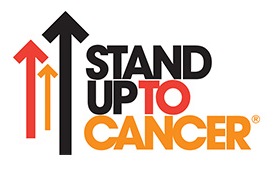
In spite of the AACR’s growth and the rapid advances in cancer science, by 2008 there was consensus that progress against cancer had to be accelerated through increased funding, a difficult task in the face of a worldwide economic recession. A new initiative, Stand Up To Cancer, a fundraising collaboration between the AACR and the Entertainment Industry Foundation, was unprecedented. The AACR later became the scientific partner to SU2C, which has has now raised over $240 million that directly funds multi-institutional translational research teams (“Dream Teams”) and innovative research grants to young investigators selected through AACR’s scientific grant review process.
The results of this unique research are being reported at scientific meetings and in the pages of AACR journals, including the newest journals, Cancer Prevention Research (2008), Cancer Discovery (2011), and Cancer Immunology Research (2013), and are included in AACR’s Annual Cancer Progress Report. In 2013, to further the recognition of pioneers in cancer research, the board of directors established the Fellows of the AACR Academy. The Academy, which inducts a new class of Fellows each year, honors distinguished scientists whose major contributions have propelled significant innovation and progress against cancer.
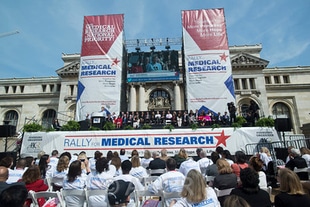
New initiatives in fund development by the AACR Foundation and a focus on increasing government research funding through events such as the Rally for Medical Research are raising public awareness of how research contributes to the conquest of cancer.
Beginning in 2014, the AACR placed a new emphasis on expanding its international outreach. The association hosted its first meeting in China, the inaugural New Horizons in Cancer Research conference, that year in Shanghai. The first AACR conference on the African continent, New Frontiers in Cancer Research, was held in Cape Town, South Africa, in 2017. In the same year, the first AACR conference in South America, the AACR International Conference on Translational Cancer Medicine, was held in Sao Paulo, Brazil.
Whether in the U.S. or overseas, this expanded outreach to cancer stakeholders continued across various initiatives. The AACR was one of the production supporters of the 2015 PBS television series, “Cancer: The Emperor of All Maladies,” which highlights the history of advances in cancer research and current breakthrough treatments. This documentary was based on the book, The Emperor of All Maladies: A Biography of Cancer, by Siddhartha Mukherjee.
In 2015, the AACR also launched AACR Project GENIE®, a publicly accessible cancer registry of real-world clinico-genomic data assembled through data sharing between 19 leading international cancer centers. This registry powers precision medicine by aggregating, harmonizing, and linking clinical-grade, next-generation cancer genomic sequencing data with clinical outcomes obtained during routine medical practice from nearly every cancer patient treated at the participating institutions.
While the AACR works to drive progress across all scientific areas of interest, the association launched a dedicated initiative to advance the field of hematological malignancies beginning in 2015. In that year, the AACR organized sessions for the semiannual International Conference on Malignant Lymphoma (ICML) in Lugano, Switzerland, and subsequently collaborated with the ICML to launch a U.S. version of the conference, the biennial AACR International Meeting on Advances in Malignant Lymphoma, starting in 2018. In 2019, the AACR launched a new scientific journal, Blood Cancer Discovery, as well as the AACR Hematologic Malignancies Task Force.
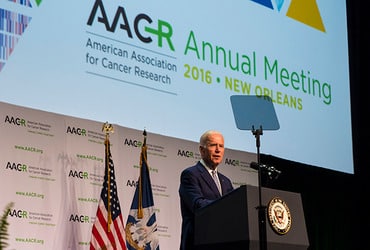
While the AACR boasts a proud history of activism on behalf of cancer research, the association took on a more prominent policymaking role in 2016 during the launch of the National Cancer Moonshot initiative. AACR leaders were invited to the White House to discuss the program, and then Vice President Biden attended the AACR Annual Meeting 2016 to address the cancer research community.
The AACR’s resilience and capacity for innovation, forged over more than a century of driving scientific progress, were sorely tested when the COVID-19 pandemic struck in 2020. As pandemic precautions made travel impossible, the AACR responded quickly to convert more than 20 meetings and workshops to a virtual format—including the first-ever Virtual AACR Annual Meeting, which took place in two parts in April and June and attracted more than 80,000 attendees from 141 countries.
AACR leadership also took bold action to address the pandemic, establishing a COVID and Cancer Task Force to provide guidance and support to patients, health care providers, and researchers navigating a new health landscape. In 2022, the AACR published the AACR Report on the Impact of COVID-19 on Cancer Research and Patient Care, a first-of-its-kind report providing a comprehensive view of the burden of COVID-19 among patients with cancer; the challenges presented by the pandemic in cancer research and patient care; and the changes implemented during the pandemic that have unexpectedly improved research practices and access to care. AACR Annual Meetings and Special Conferences continue to offer pandemic-era innovations, accommodating virtual and in-person attendance options.
In the years after the 2010 launch of the AACR Cancer Progress Report, cancer health disparities research has evolved from descriptive studies of outcomes among populations into an established multidisciplinary field. In 2020, the AACR addressed a critical need in this burgeoning field with the launch of the AACR Cancer Disparities Progress Report. Subsequently published every two years, the report provides a comprehensive overview of research related to cancer disparities and calls for policies to reduce these disparities and achieve cancer health equity.
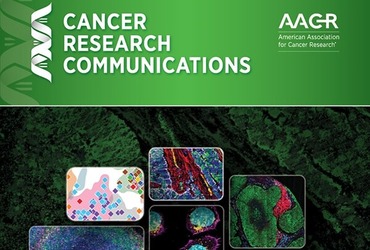
The AACR continues to drive progress for the benefit of cancer research worldwide as it navigates a post-COVID world. The AACR launched its 10th scientific journal, Cancer Research Communications, in 2021. Through 2022, AACR leadership convened a series of meetings of directors of the nation’s cancer centers with the goal of markedly expanding the scope and impact of these institutions. These meetings culminated in the launch of the AACR Cancer Centers Alliance in 2023. Because of its reputation for innovation and leadership, in December 2023 the AACR was selected to receive a transformational gift, as Pfizer Inc. announced that it had chosen to donate the rights of its royalties from the sale of Bavencio® (avelumab) in the U.S. to the AACR—a contribution that accelerates the AACR’s efforts to advance cutting-edge science and develop lifesaving discoveries to elevate patient care.
In its second century of leadership, the AACR will continue to respond to the needs of the cancer community worldwide through new programs and services that support the organization’s role as the most effective catalyst in the field of cancer research.